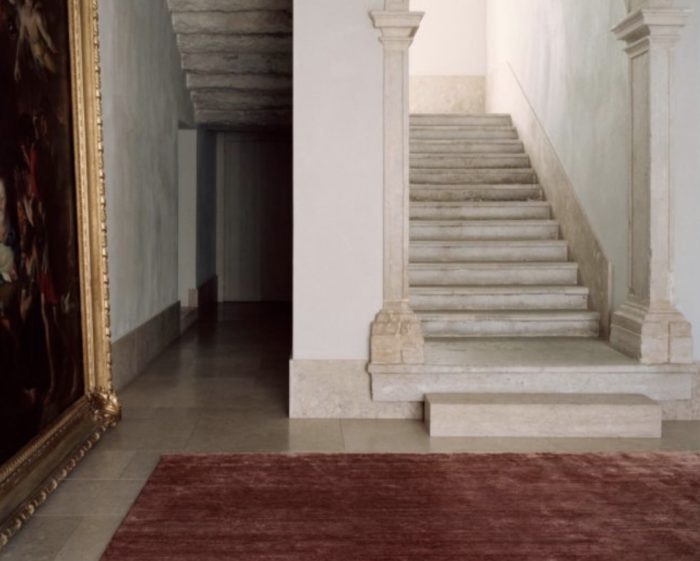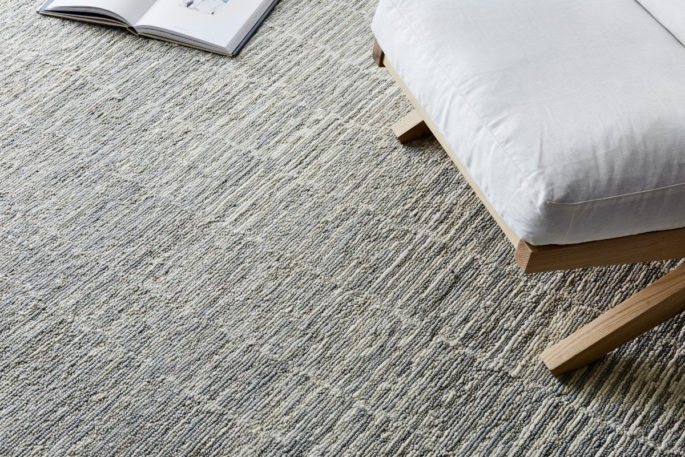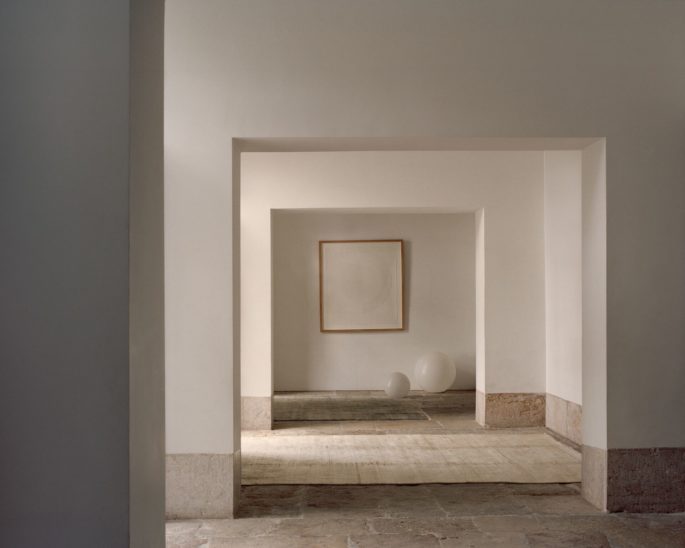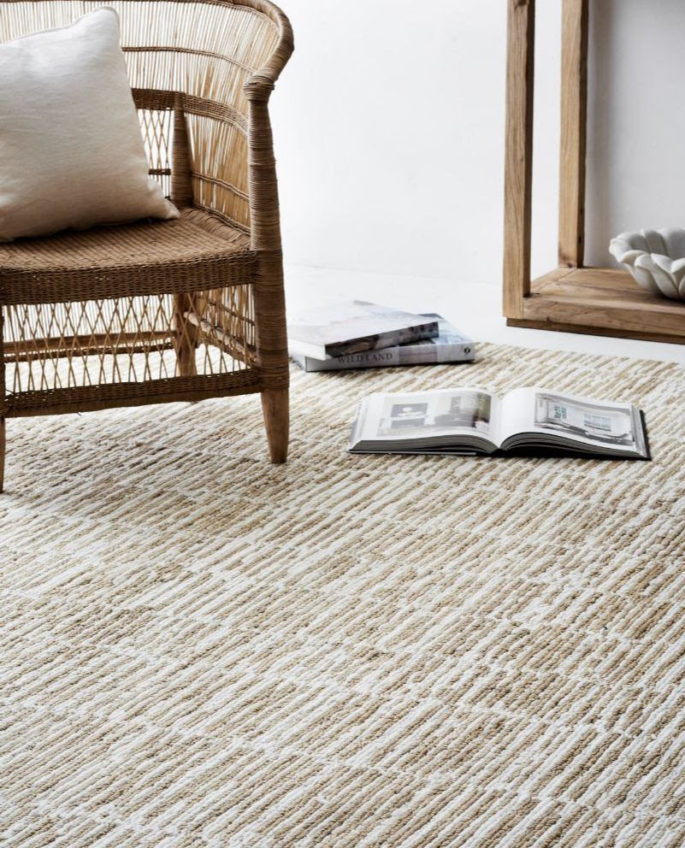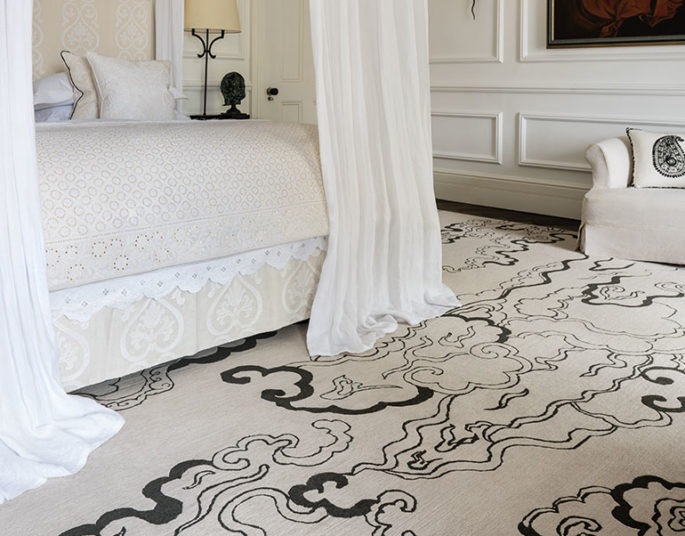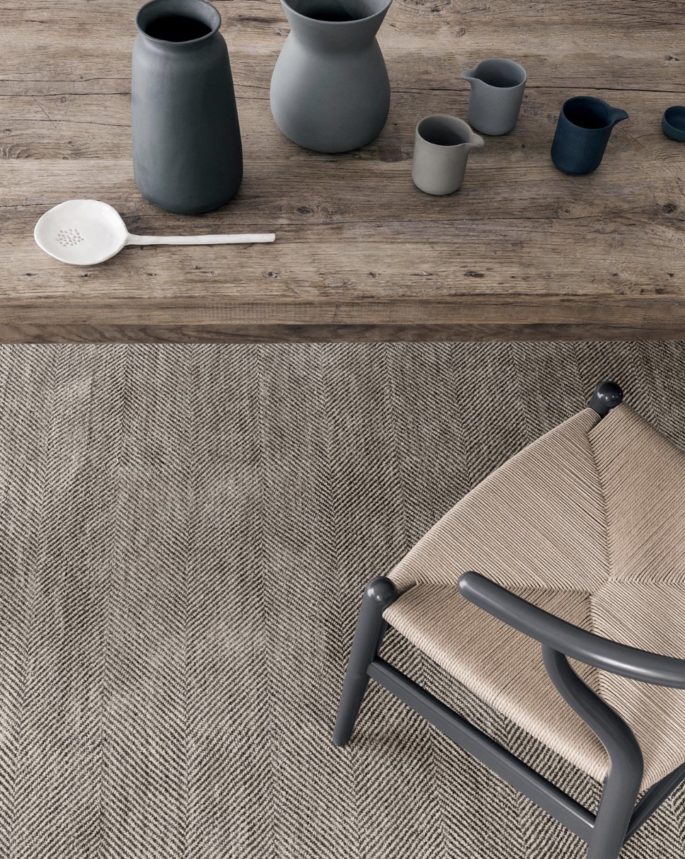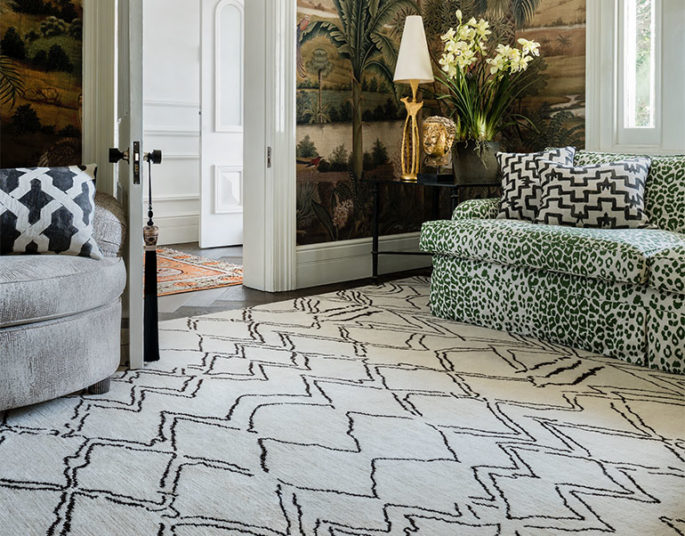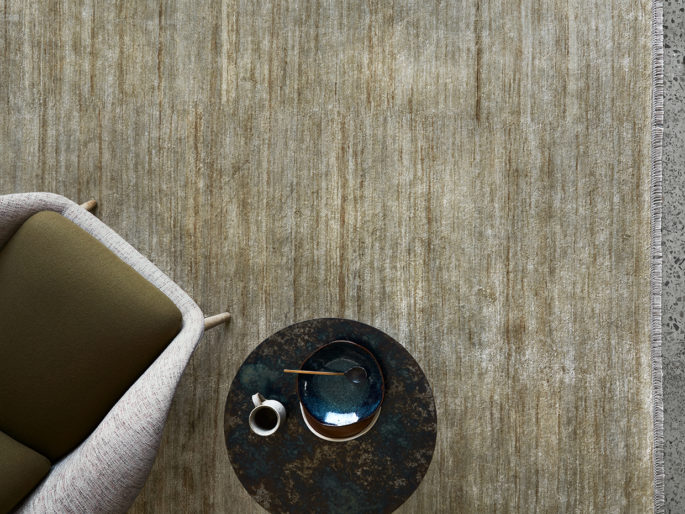Your living room isn’t complete without a rug. For it to feel pulled together it needs one. But rugs can be expensive. And because a large-scale item is going to have a big effect on the way a room looks and feels, choosing one can be intimidating. The right rug may be in your home for decades, outliving paintwork and successive décor schemes. The wrong rug will serve as a daily reminder of the money you wasted — and the money you’ll have to spend if you want to replace it. And getting it wrong is all too easy, given the range of materials, colours, patterns and sizes available.
Finding the best one can be like trying to solve a puzzle. Here’s expert advice on the smorgasbord of great rugs out there.
Use One or a Few
There is no rule that says you have to limit yourself to a single rug in the living room. Designers often use multiple rugs in larger rooms to define different areas. So how do you know whether one or a few is best? Smaller spaces, and living rooms enclosed by walls and doorways, usually benefit from a single large rug.
If you are dealing with apartments where the goal is to expand the sense of usable space in a living room – it’s usually best to use one rug and make it as big as you possibly can.
Sprawling, open-concept spaces, are more likely to benefit from multiple rugs, which help ground disparate groupings of furniture and can be used to separate a living area from a dining or media area, in the absence of walls. Read more, ‘Decorating on a Budget: Insider Secrets.’
Can’t Decide? Then Layer Them
Another option is to layer rugs on top of each other, with a single large, plain rug on the bottom to cover most of the floor, and smaller decorative rugs on top to anchor different seating areas.
A favourite designer tricks is to use a very big sisal rug, which is relatively inexpensive, and then layer softer, plusher kilims or dhurries on top at the seating areas. It tells everybody, by the enormity of the sisal, that you’re all at the same party. Read more, ‘The 10 Commandments of Furniture Placement.’
Determine the Size
It is important to work around a room’s obstructions when planning a rug purchase. Start with the practical and then get to the decorative, while considering the architecture and mechanics of a home. Are there doorways and door swings to consider? Is there any floor grille that you don’t want to cover? Is there a fireplace where you have to deal with a hearth? After taking these details into account, consider circulation around the seating areas. There’s nothing worse than being forced to walk on the perimeter of a rug – with one foot on and one foot off.
Choose a size that either completely covers the walkway or leaves the floor exposed where people need to pass by.
Then decide how far beyond the furniture the rug should extend. A common way to size a rug is to ensure that it reaches underneath all four feet of all the furniture. Or you could use a smaller rug that runs under the front feet of the sofas and chairs, and then stops there. Just make sure that smaller objects at the rug’s edges, like end tables and floor lamps, are completely on or off the rug. You don’t want unbalanced, rocking end tables every time you put something down.
What about small rugs that float in the centre of a room, untethered by sofa and chair legs? Many experts advise against them. Small rugs look a little bit lost and unfinished. It can feel like a postage stamp, which is not so pleasing for the eye.” Read more, ‘How to Decorate: Making a Big Impact on a Small Budget.’
Choose Patterned or Plain
A boldly patterned rug can serve as the defining feature of a living area, but because it has so much impact, it’s a choice that requires courage. Deciding whether to go with a graphic statement rug or something more understated comes down to personal preference, as well as your overall design vision and where your home is.
In the city, often people will wish to invest in an antique carpet from an auction or one of the great rug vendors as a showpiece. Whereas in country homes and beach houses, often some kind of sisal, sea-grass or coir carpet might be a better option because it’s a little more informal and rustic.
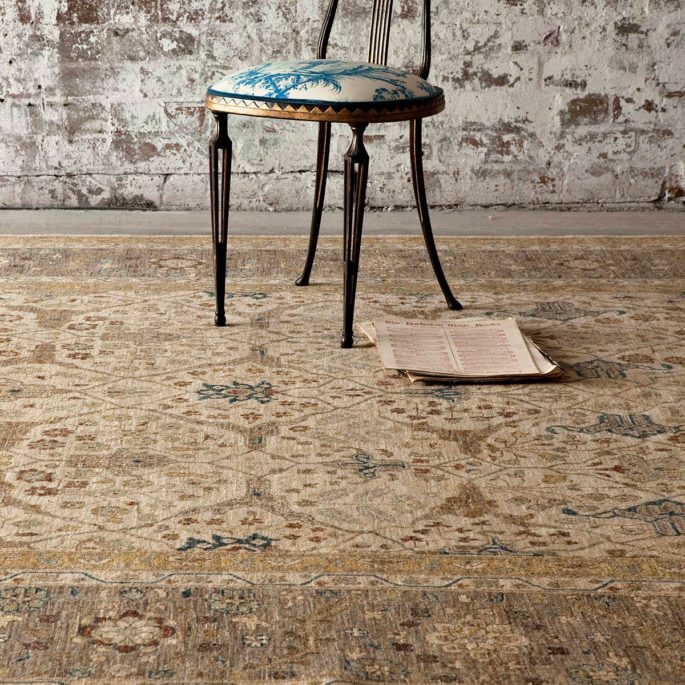
Cadry’s Classic Collection, cadrys.com.au
If you decide to shop for a patterned rug, there are endless choices available, from free-form contemporary designs to more traditional ones. If you’d rather keep it simple, there are plenty of opportunities to introduce pattern on a smaller scale.
For more laid-back, relaxed environments, there are fantastically beautiful sisals with patterns in them, like herringbones and subtle stripes. To dress them up a bit, add a fabulous binding in leather or suede. It doesn’t increase the price enormously, but it’s very chic, beautiful and timeless.
Pick a Material
Rugs come in many materials, including plant-based fibres like cotton, linen, sisal, and jute; downy, natural fibres like wool, silk and mohair; and synthetic materials like nylon and solution-dyed acrylic. There are also non-woven rugs made from stitched-together materials like cowhide. Each offers a different look and feel, with varying characteristics related to how well the materials wear and how easy they are to clean. They also range widely in price.
Rugs made from plant-based materials are often among the most affordable and offer an easy, casual look. But different fibres have different durability: Cotton and linen, for instance, age fairly quickly, while sisal can take more abuse. One of the most popular materials is wool, which can offer a range of looks depending on how it’s handled, from thin, flat weaves to hairy, hand-knotted shags.
Wool tends to be more expensive than most plant-based materials, but it is stain resistant, softer underfoot and durable enough to last for centuries.
Wool has lanolin in it, which makes it a very cleanable, stain-resistant fibre. When you spill, it sits on top for a little while before it will actually absorb, which gives you time to clean it up.
Mixed-fibre rugs can be difficult to clean: for example, silk can’t take water, but wool needs water to be cleaned. So when you have silk-and-wool mixes, it creates hard-to-sort problems once there’s a spill.
Consider Indoor-Outdoor Options
If spills and stains from children and pets are a concern, it may be a good idea to choose an indoor-outdoor rug made from a synthetic material like solution-dyed acrylic, polypropylene or PET(polyethylene terephthalate), which are now often so soft and appealing that they can be hard to distinguish from indoor-only materials.
They’re impenetrable: You can’t stain them; you can’t ruin them. In certain situations where children are young or you have dogs, they might be the way to go.
Don’t Forget the Rug Pad
It’s tempting to bring a rug home and put it down immediately, but there’s a step you shouldn’t skip: putting a non-slip rug pad underneath. Cut the pad to a size slightly smaller than the carpet. A general rule is that it should be trimmed about an inch shorter than the rug on all sides, to provide maximum grip while preventing a visible change in level where the rug transitions from pad to floor.
Rug pads offer a touch of additional cushioning. But their real utility is more about keeping it in place and preserving the life of the carpet. In other words, it ensures that your new rug won’t slide like a banana peel.

